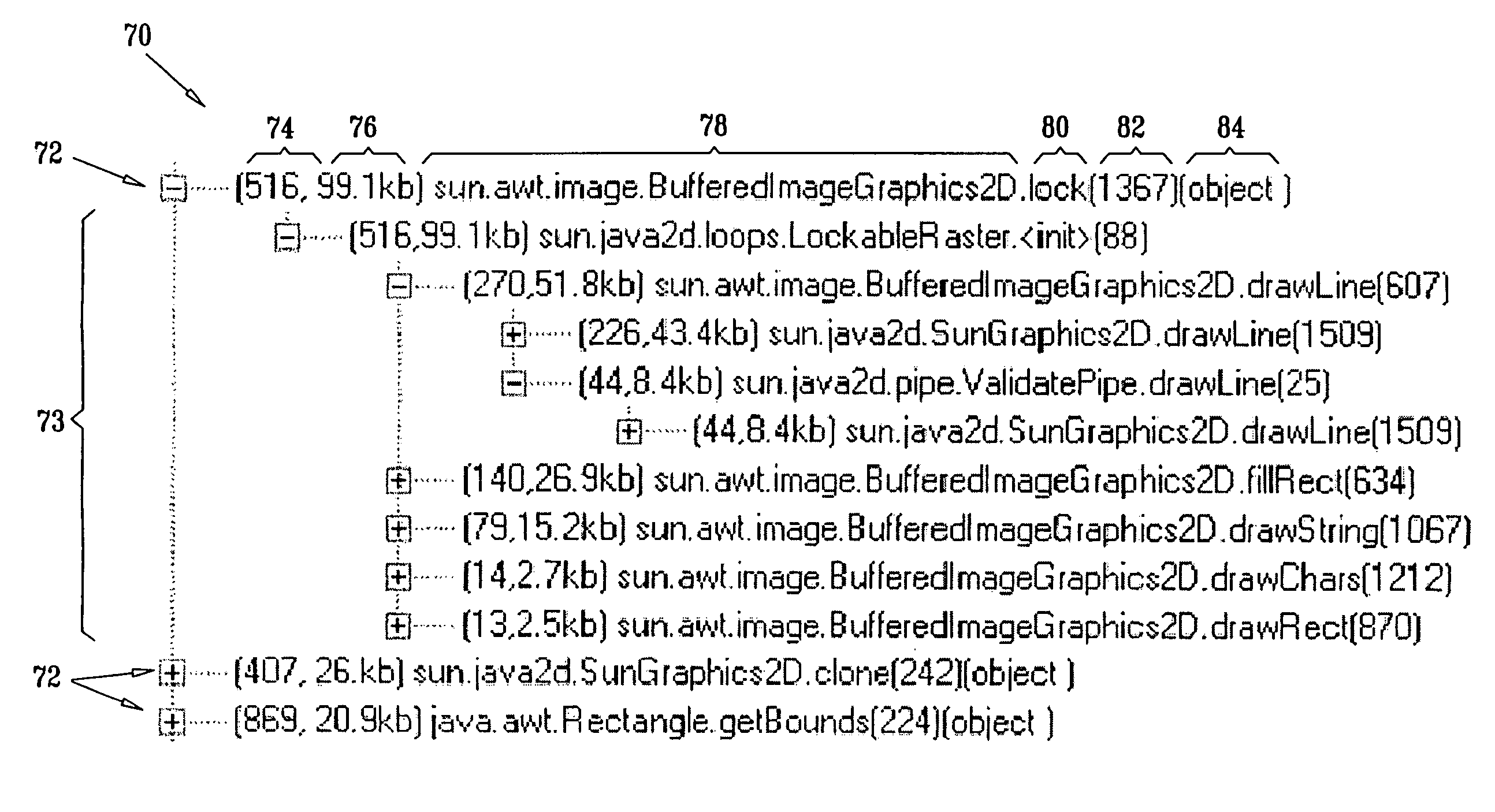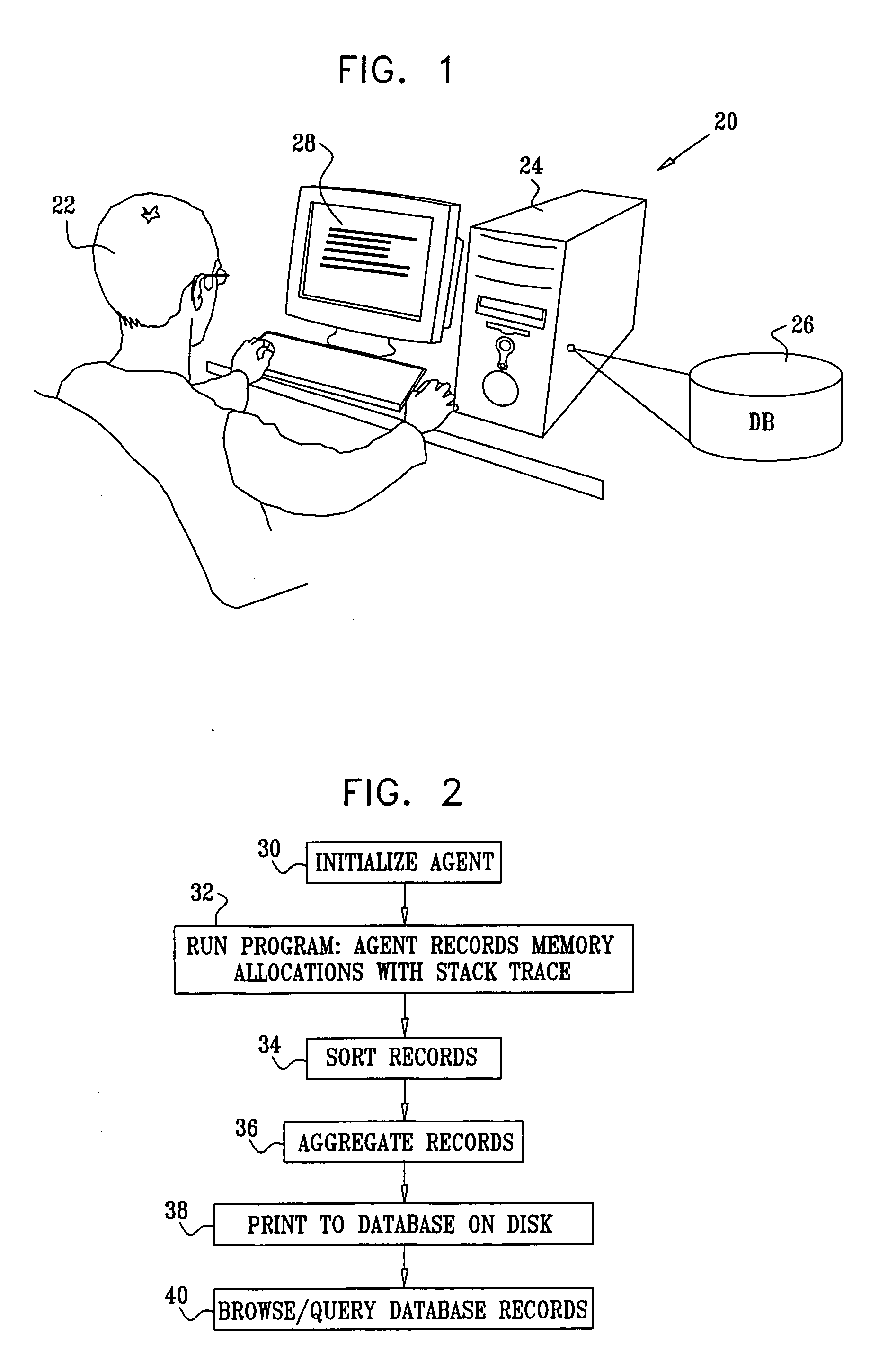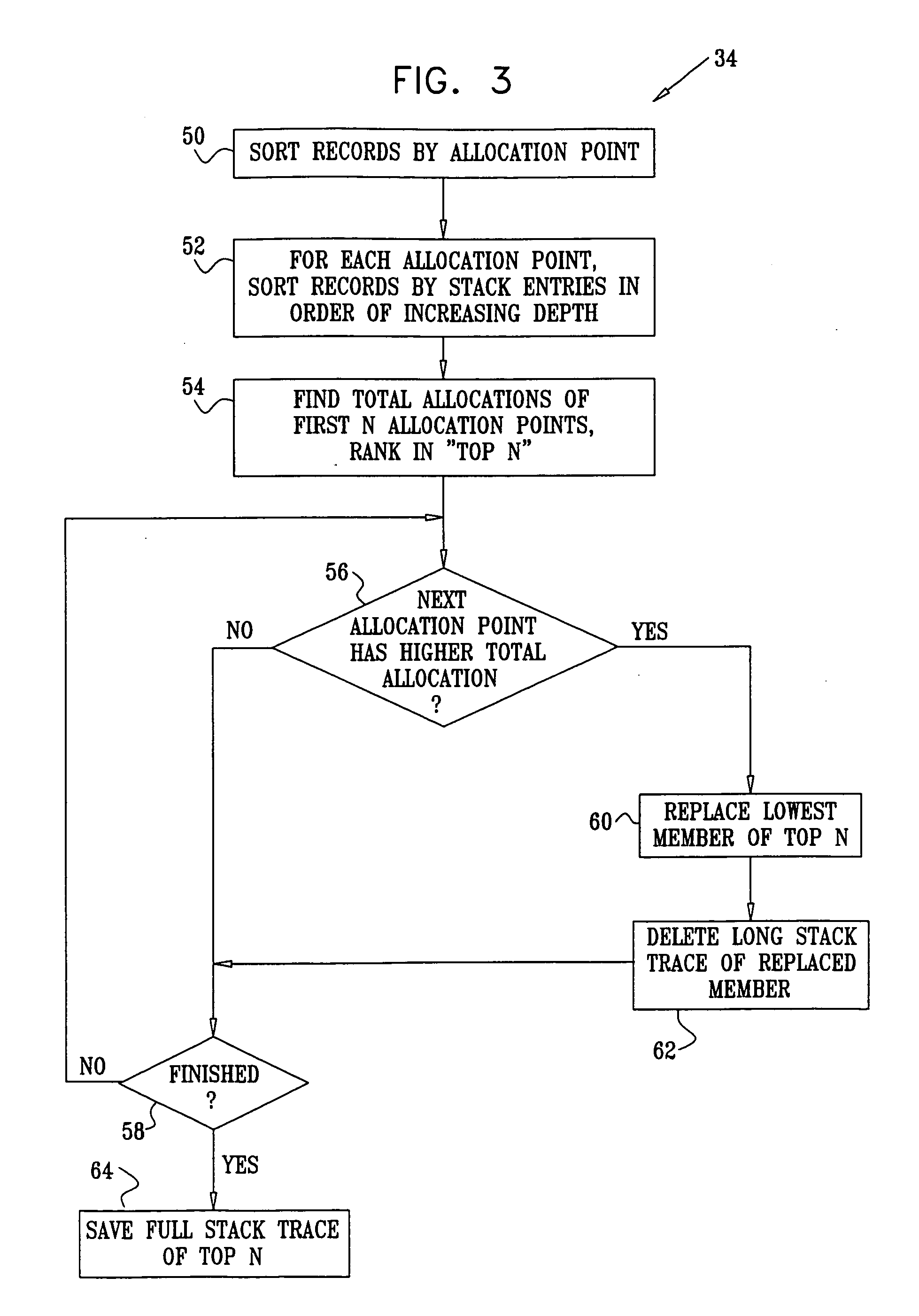Memory debugging tool
a memory debugging and tool technology, applied in the field of computer software development, can solve the problems affecting the performance of the application, and generally being unable to determine at any particular point in the execution of the application how many memory objects and how much total memory, etc., and achieve the effect of generating a large volume of data
- Summary
- Abstract
- Description
- Claims
- Application Information
AI Technical Summary
Benefits of technology
Problems solved by technology
Method used
Image
Examples
Embodiment Construction
[0026]FIG. 1 is a schematic, pictorial illustration of a system 20 for software development, in accordance with an embodiment of the present invention. The system is used by a programmer 22 to run and debug a software program under development, such as a Java application. Typically, the system is built around a computer processor 24, which is programmed in software to carry out the functions described hereinbelow. This software may be downloaded to system 20 in electronic form, over a network, for example, or it may be furnished on tangible media, such as optical, magnetic or electronic memory.
[0027] The operation of system 20 is described in detail hereinbelow with reference to the figures that follow. Briefly, processor 24 runs the program under test and records memory allocations that occur during the program. These records are sorted, aggregated and then stored in a database in a memory 26. Alternatively, other sorts of data structures, as are known in the art, may be used to h...
PUM
 Login to View More
Login to View More Abstract
Description
Claims
Application Information
 Login to View More
Login to View More - R&D
- Intellectual Property
- Life Sciences
- Materials
- Tech Scout
- Unparalleled Data Quality
- Higher Quality Content
- 60% Fewer Hallucinations
Browse by: Latest US Patents, China's latest patents, Technical Efficacy Thesaurus, Application Domain, Technology Topic, Popular Technical Reports.
© 2025 PatSnap. All rights reserved.Legal|Privacy policy|Modern Slavery Act Transparency Statement|Sitemap|About US| Contact US: help@patsnap.com



